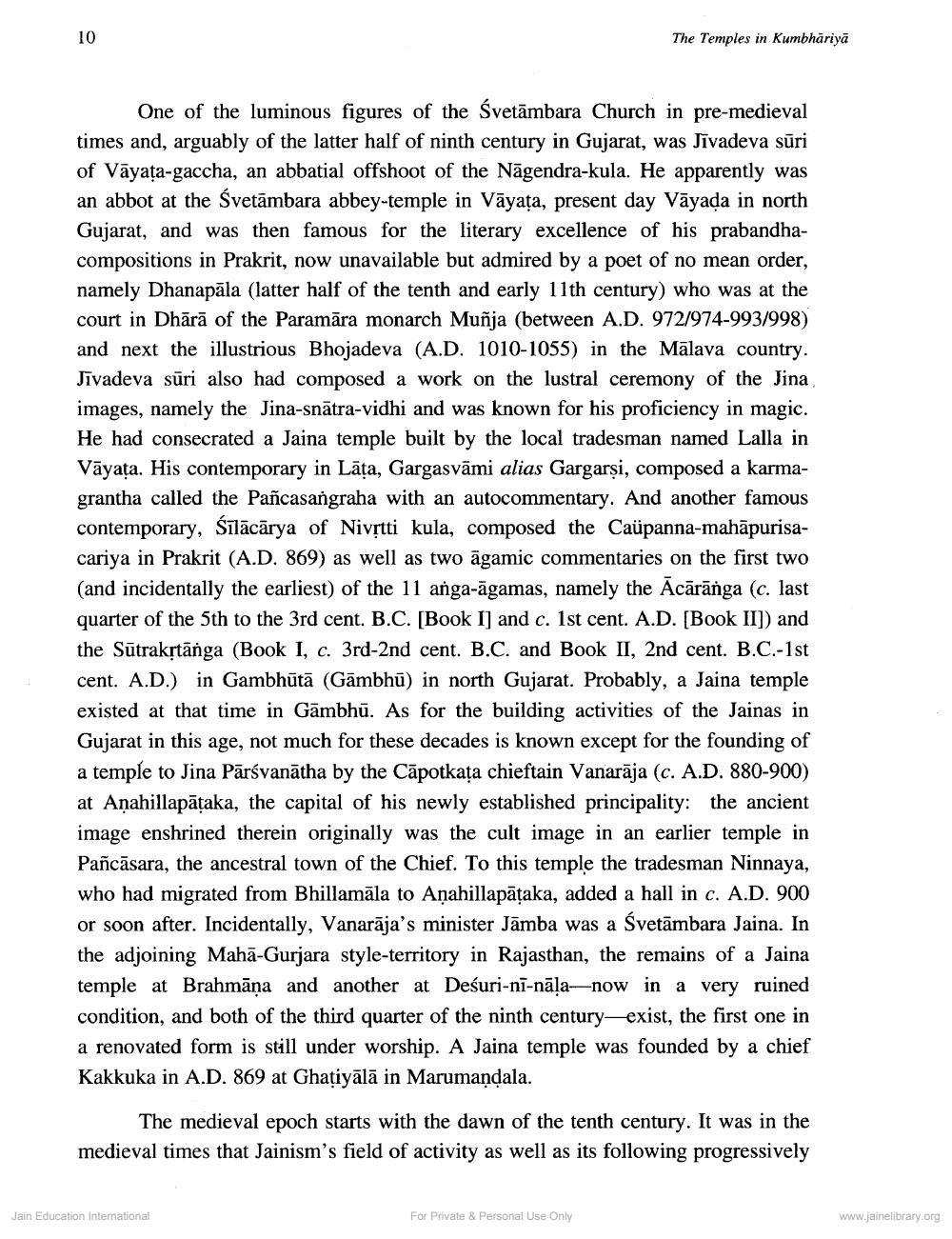________________
10
One of the luminous figures of the Svetambara Church in pre-medieval times and, arguably of the latter half of ninth century in Gujarat, was Jivadeva sūri of Vayața-gaccha, an abbatial offshoot of the Nagendra-kula. He apparently was an abbot at the Śvetämbara abbey-temple in Vayața, present day Vayada in north Gujarat, and was then famous for the literary excellence of his prabandhacompositions in Prakrit, now unavailable but admired by a poet of no mean order, namely Dhanapala (latter half of the tenth and early 11th century) who was at the court in Dhārā of the Paramāra monarch Muñja (between A.D. 972/974-993/998) and next the illustrious Bhojadeva (A.D. 1010-1055) in the Malava country. Jīvadeva sūri also had composed a work on the lustral ceremony of the Jina images, namely the Jina-snätra-vidhi and was known for his proficiency in magic. He had consecrated a Jaina temple built by the local tradesman named Lalla in Vāyata. His contemporary in Lața, Gargasvāmi alias Gargarși, composed a karmagrantha called the Pañcasangraha with an autocommentary. And another famous contemporary, Śilācārya of Nivṛtti kula, composed the Caupanna-mahāpurisacariya in Prakrit (A.D. 869) as well as two agamic commentaries on the first two (and incidentally the earliest) of the 11 anga-agamas, namely the Acaranga (c. last quarter of the 5th to the 3rd cent. B.C. [Book I] and c. 1st cent. A.D. [Book II]) and the Sūtrakṛtānga (Book I, c. 3rd-2nd cent. B.C. and Book II, 2nd cent. B.C.-1st cent. A.D.) in Gambhūtā (Gāmbhū) in north Gujarat. Probably, a Jaina temple existed at that time in Gāmbhū. As for the building activities of the Jainas in Gujarat in this age, not much for these decades is known except for the founding of a temple to Jina Parsvanatha by the Capotkața chieftain Vanaraja (c. A.D. 880-900) at Anahillapāṭaka, the capital of his newly established principality: the ancient image enshrined therein originally was the cult image in an earlier temple in Pañcăsara, the ancestral town of the Chief. To this temple the tradesman Ninnaya, who had migrated from Bhillamāla to Aṇahillapāṭaka, added a hall in c. A.D. 900 or soon after. Incidentally, Vanaraja's minister Jämba was a Svetämbara Jaina. In the adjoining Mahä-Gurjara style-territory in Rajasthan, the remains of a Jaina temple at Brahmana and another at Deśuri-ni-nāla now in a very ruined condition, and both of the third quarter of the ninth century-exist, the first one in a renovated form is still under worship. A Jaina temple was founded by a chief Kakkuka in A.D. 869 at Ghatiyälä in Marumandala.
The Temples in Kumbhariyā
The medieval epoch starts with the dawn of the tenth century. It was in the medieval times that Jainism's field of activity as well as its following progressively
Jain Education International
For Private & Personal Use Only
www.jainelibrary.org




